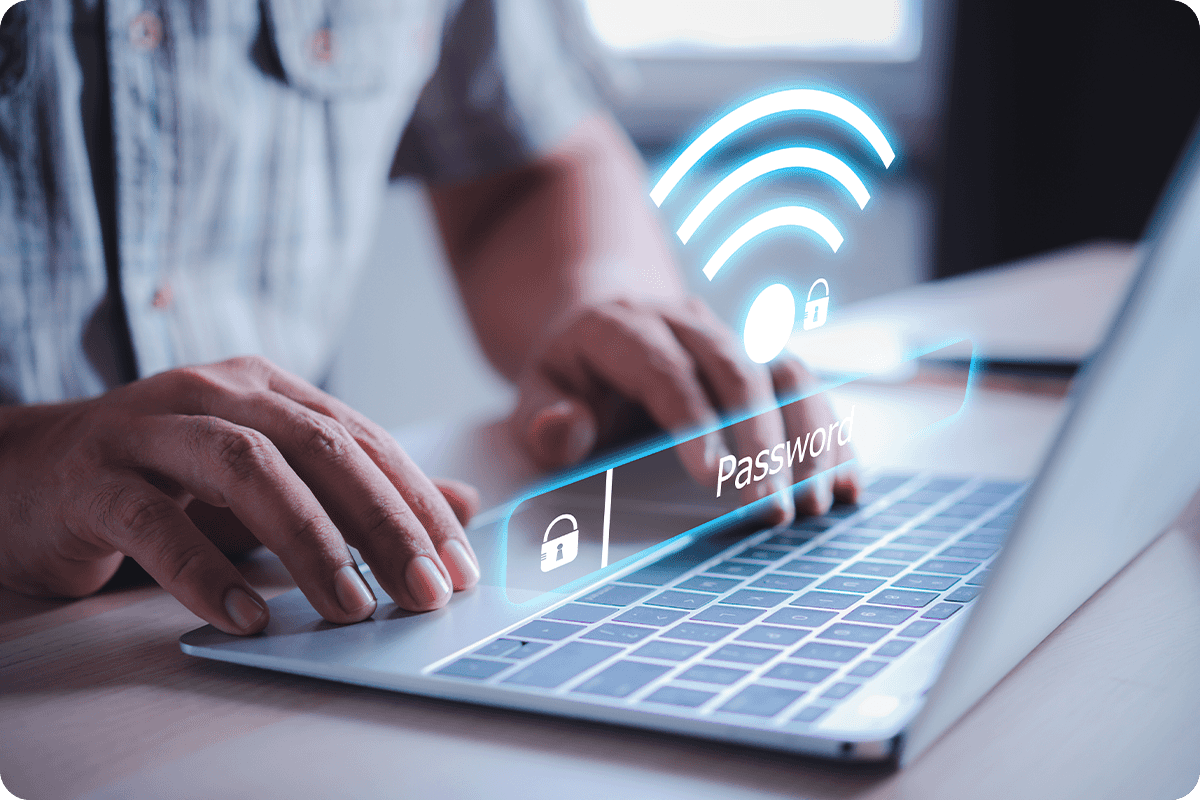Do I Need WiFi to Get on the Internet?
By: Vincent Totino
Read Time: 5 min.
July 10, 2025
Home internet access has become a crucial way to connect to your friends, family, and favorite entertainment options.But to the uninitiated, navigating a home internet hookup can mean dealing with a lot of new terms and concepts.
Never fear, Optimum can explain.

What is Wi-Fi Internet?
Wi-Fi is a wireless networking technology using radio waves to provide wireless high-speed Internet access. It is a common misconception that the term Wi-Fi is short for "wireless fidelity". It is a trademarked phrase referring to IEEE 802.11x standards.
The Internet is the worldwide network of servers, emails, websites, apps, social media, streaming services, video chat platforms, and other software tools people use to communicate with each other. So while you can use Wi-Fi to connect to the Internet, you don’t have to use WiFi.
In fact, all of the information on the Internet passes through wires at some point. These can be fiber optic cables that send data to and from the physical servers (basically a fancy computer without a screen) that host most of the information on the Internet. They can also be coaxial cables that bring data signals from those fiber optic transmissions into your home, or ethernet cables that connect computers, servers and networks to each other.
Is there a difference between WiFi and the Internet?
Connecting To The Internet Without Wi-Fi
In terms of home Internet hookups, it’s possible to connect to the Internet using an ethernet cord between a computer and your router/modem device.
In addition, cellular data and its connectivity also allows you to connect to the Internet. Cellular signals use the satellite communication methods to connect cell phone calls. These transmissions can be converted to Internet data signals and back, enabling you to check your email or even watch videos on a smartphone without being connected to the Internet via Wi-Fi.
Using The Hotspot For Internet Connectivity
A “Hotspot” also uses cellular data. When you’re using a hotspot, it transmits data signals from your computer to your phone, and from your phone to the Internet and back via cellular data. Hotspots are different from Wi-Fi in this respect, although you might see the two words misleadingly combined or switched.
National cell networks offer slower connection speeds than the average home Internet Wi-Fi, and using a lot of cellular data via your hotspot can sometimes result in overage charges, depending on whether your cellular service contract includes unlimited data.
Interested in setting up an unlimited cellular data plan? Consider Optimum Mobile Unlimied Plans.
So is there such a thing as non-WiFi Internet?
Why do people use WiFi?

How do I set up WiFi in my home?
How To Determine If You Have Wi-Fi Internet
If you have home internet access, you might already have Wi-Fi capability. Contact your Internet service provider to see if you have the right equipment.
If you don’t have home Internet but want to make sure you can connect via Wi-Fi, mention this when you first contact a home Internet service provider. When you sign up, they’ll send a technician to your house with the necessary equipment, usually including a wireless router and modem combination device that plugs into your wall near the incoming Internet cable. The technician will ask you to name your home Internet Wi-Fi network, and will work with you to set up a password (definitely recommended for security reasons).
TIP: Both your network name and exact case-sensitive password will be important to remember. Write them down and keep them handy.
Why does everybody keep asking for the WiFi password?
Using Your New Wi-Fi Connection
After your home Wi-Fi network is connected and running, you can connect to the Internet via Wi-Fi using multiple devices at once.
Select your own home Wi-Fi network from the list of local networks in whatever prompt your device offers for “turn Wi-Fi on,” and then enter the password. As long as the signal is strong enough, you’ll be using Wi-Fi in no time.
A majority of Wi-Fi networks are protected by password for security reasons. After all, you wouldn’t want every device in your home talking to a stranger’s computer.
Some Wi-Fi networks are password-free. These open networks often exist in public places, such as libraries, airports, or college campuses, where reliable Internet access is especially important.
The big thing to remember about Wi-Fi networks: they are localized to within a limited range. So you won’t be able to access the Internet from your home Internet Wi-Fi network when you’re across town. Instead, you must use a password to connect to the Internet through the Wi-Fi networks available wherever you are, provided there are no open networks. Mobile devices pick up nearby signals automatically, and display them as a list of options.
This is why guests in your home may ask for your Wi-Fi network name and password. Without it, they won’t be able to connect their mobile device via Wi-Fi to show you that video they saw on Facebook, or search for that recipe they just mentioned in conversation.
Are you getting everything you need from your home Internet? Interested in Whole Home Wi-Fi?
FAQ: Wi-Fi Internet
Can I get Internet without Wi-Fi?
Yes, using your hotspot or connecting to the Internet via your modem also allows you to access the Internet without Wi-Fi.
Are Wi-Fi and Internet the same thing?
No, Wi-Fi is a remote signal used to connect wirelessly to the Internet. Wi-Fi is not the Internet.
Why is Wi-Fi needed for the Internet?
You do not need Wi-Fi to connect to the Internet. Wi-Fi is a fast and wireless way to connect to the Internet, but there are numerous ways to access the Internet without Wi-Fi.
How can I get Internet in my house without Wi-Fi?
If you do not wish to use Wi-Fi to connect to the Internet, you could use your hotspot (cell phone signal) or connect your computer to a modem.
Can you access the Internet without a service provider?
If you do not have an Internet provider in your home, you could access the Internet via computers at a public library, a cafe, or another location. Optimum offers affordable and fast Wi-Fi; reach out to Optimum to learn more.





